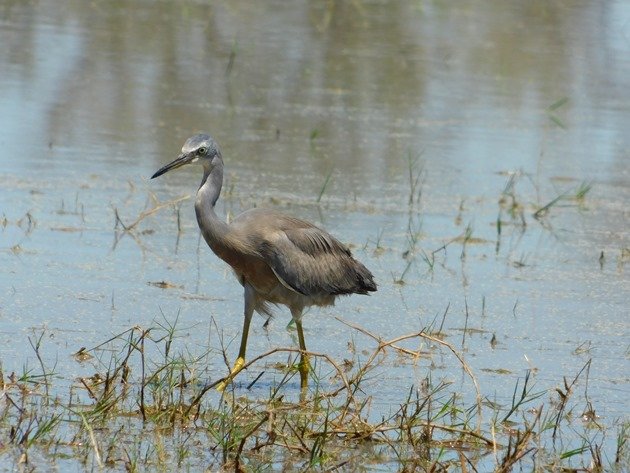
White-faced Herons–Egrettta novaehollandiae are a very versatile heron species that we often observe around Broome. They can be found in a variety of habitats during the year. They are the most widely spread heron in Australia and can be found across the mainland, Tasmania and most coastal islands. The White-faced Heron also occurs in New Zealand. Before our ephemeral lakes started to dry out there were often White-faced Herons present. They fed on the small insects, amphibians and fish around the edges of the lakes and could often been observed. The birds would walk fast along the edge to disturb the bottom and they then quickly grabbed the food.
White-faced Herons have a very distinct white face and yellow legs as adults. Younger birds may have less of a white face, but there is a reddish colour in the under parts of the bird. They should not be mistaken as a grey morph of the Eastern Reef Egret, which has shorter chunky legs and a much more uniform grey colour.
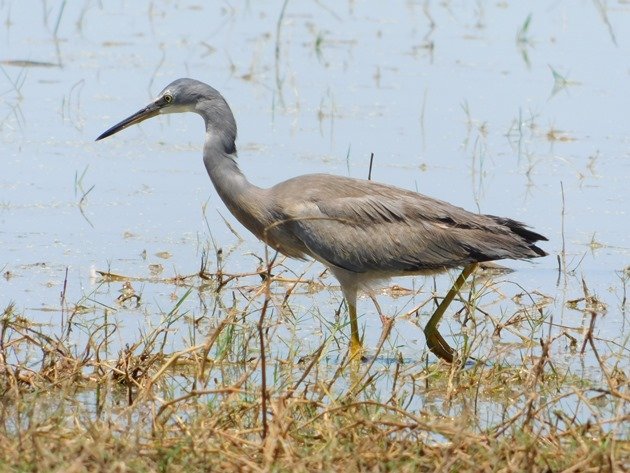
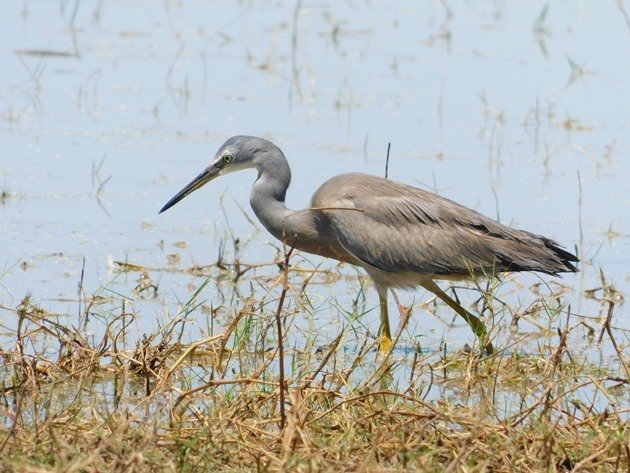
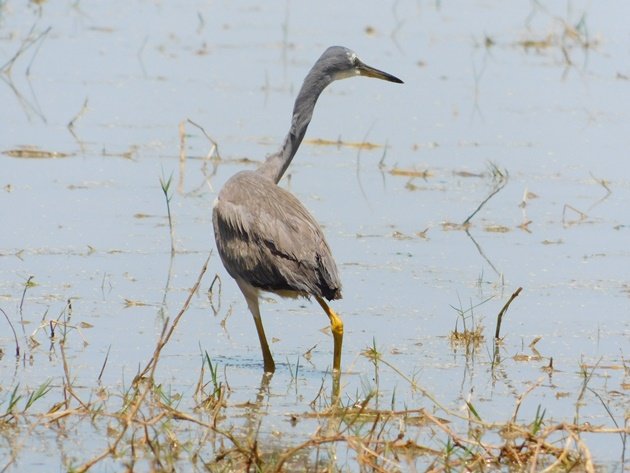
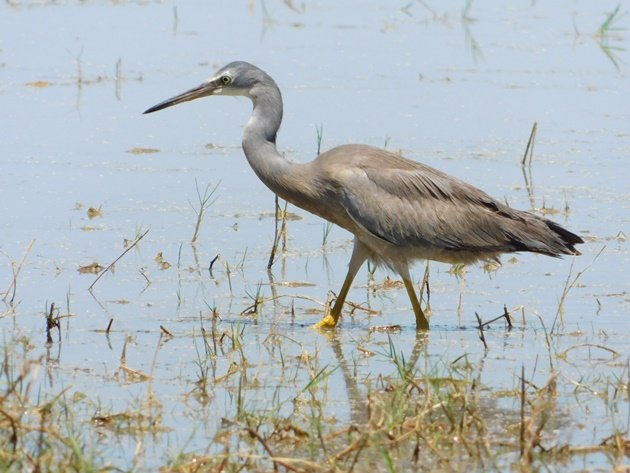
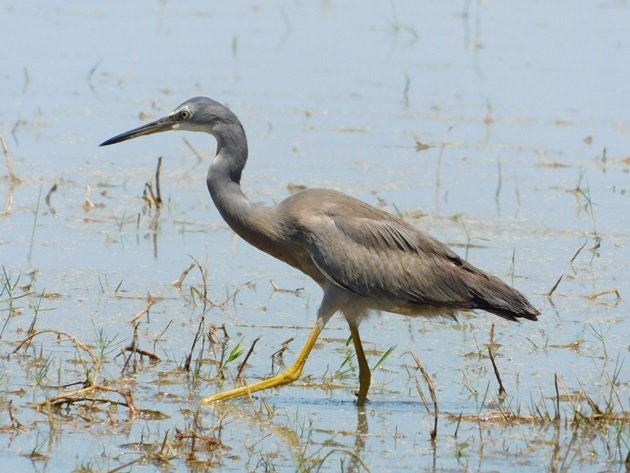
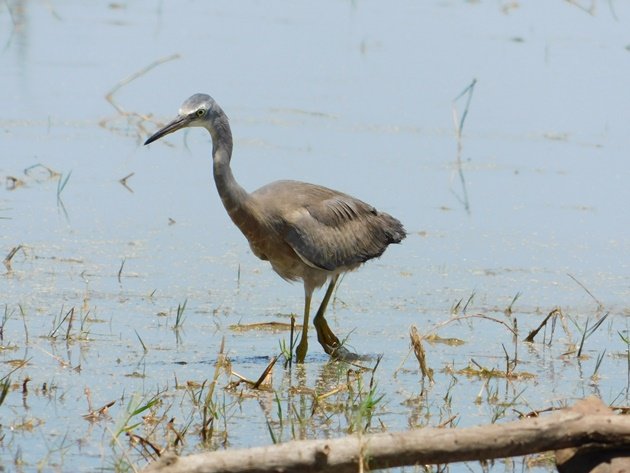
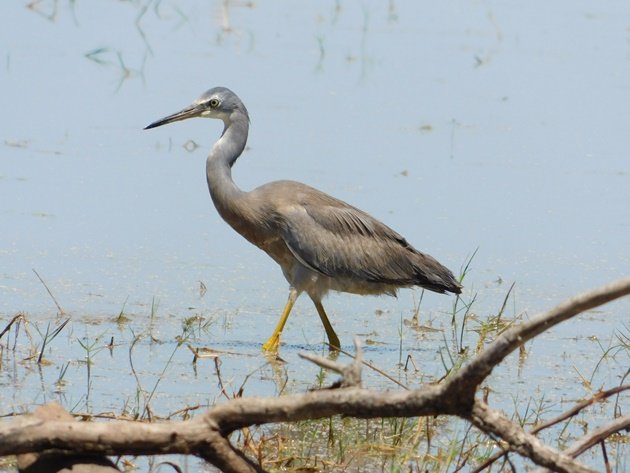
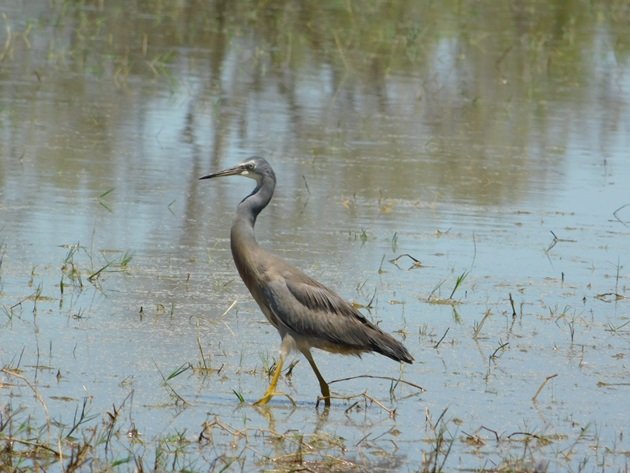
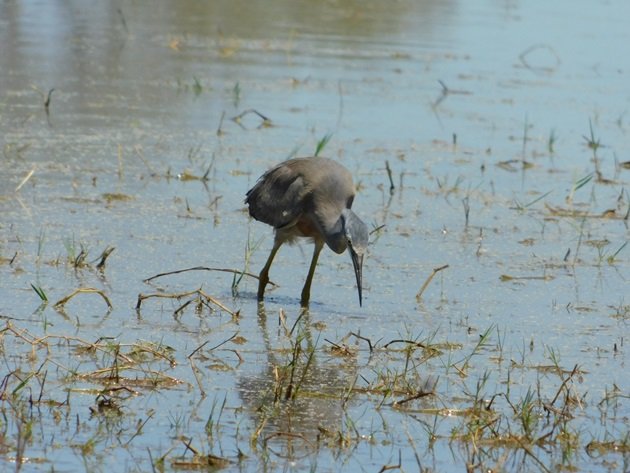
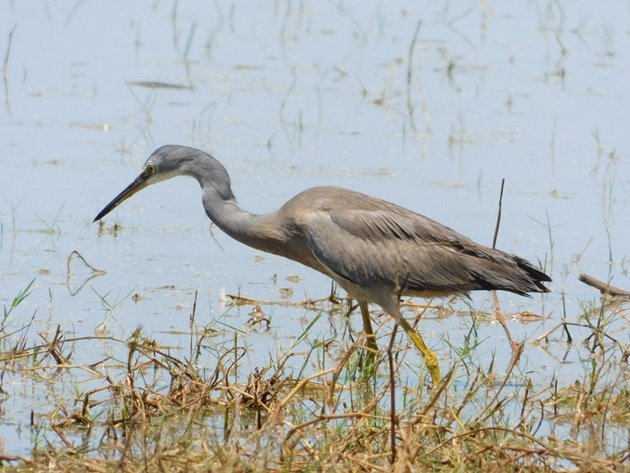
White-faced Heron at an ephemeral lake near Broome
On the coast around Broome the White-faced Herons are often found on the reef feeding amongst the Eastern Reef Egrets. Once the tide pushes in they stand on the sandstone cliffs and their colouring becomes more distinct.
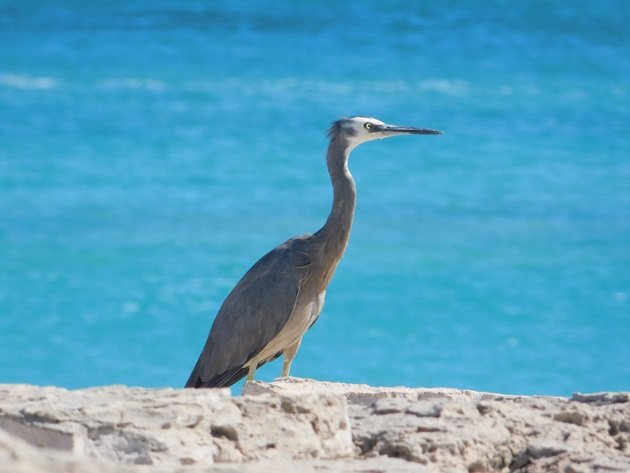
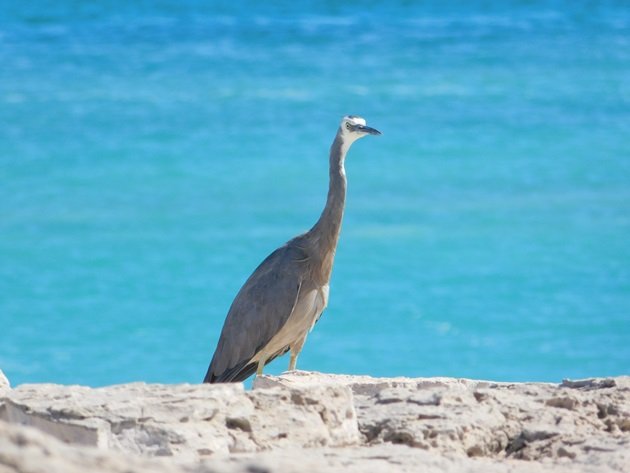
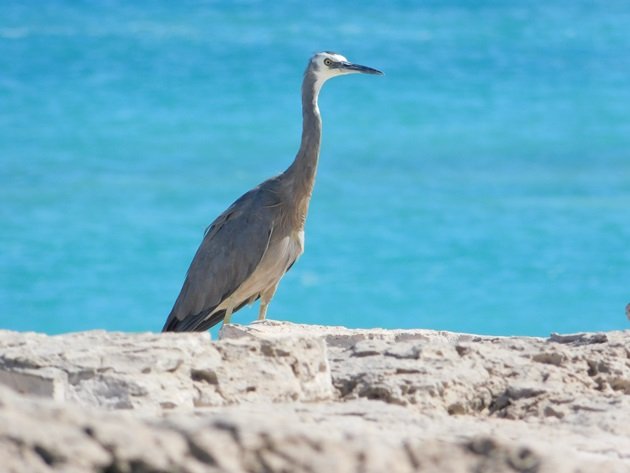
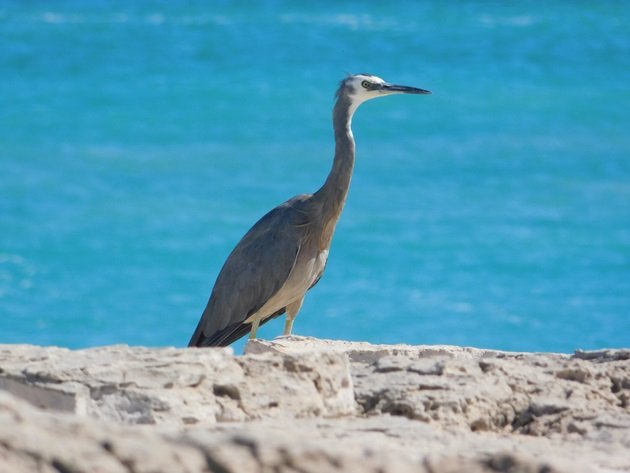
White-faced Heron on the coast
Often along the coast we also encounter Striated Herons and if we go further north to Derby we are sometimes lucky enough to observe the Great-billed Heron. Pied Herons occasionally show up in Broome if we have a good wet season, but after months of no rain they are unlikely to show up any time soon. White-necked Herons are also quite common, but once again we need more rain for them to arrive in decent numbers.
So, we continue to patiently wait for rain! The green tree frogs are calling if we turn a hose on in desperation!


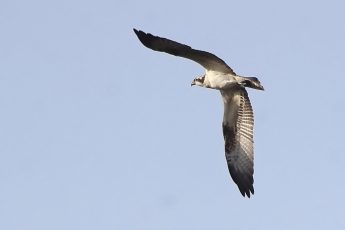

 New writers welcome – please contact us for details.
New writers welcome – please contact us for details.

















Thanks so much, Clare, for another fascinating post. I sure hope the rain comes soon to your area, and will keep my fingers crossed!
Wishing you and Grant a very Merry Christmas and a wonderful 2022!
Lisa
Merry Christmas Lisa! There is a small chance of rain in town, but it is mostly falling inland. Any rain is welcome after so long!